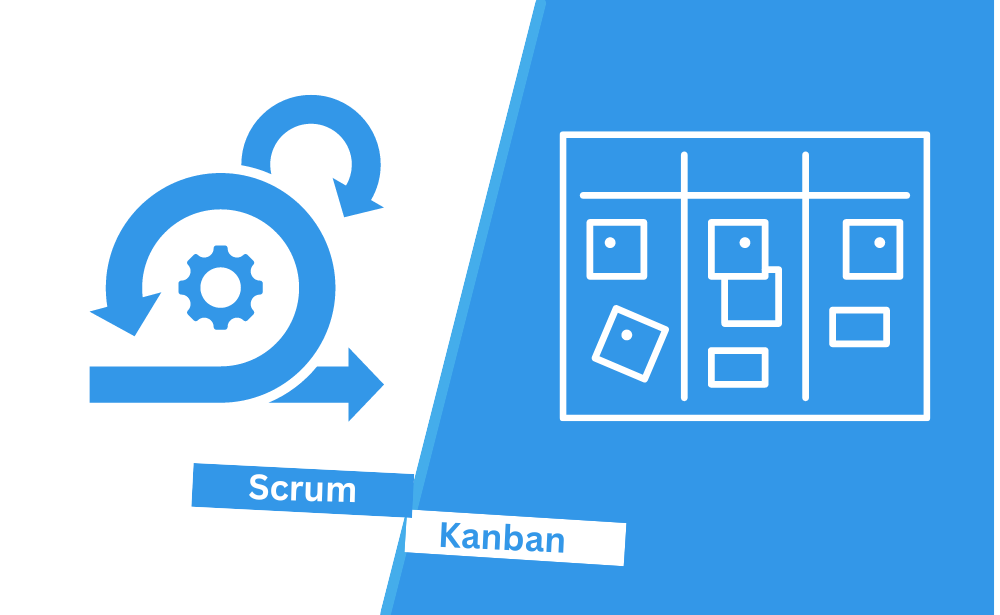
Agile methodologies have transformed the landscape of project management and product development, offering frameworks that emphasize flexibility, collaboration, and continuous improvement. Among the various Agile methodologies, Scrum and Kanban are two of the most popular. Both have their unique strengths and are suited for different types of projects and team dynamics. This blog will help you understand the key differences between Scrum and Kanban and guide you in choosing the right methodology for your team.
Understanding Scrum
Scrum is an iterative and incremental Agile framework primarily used for managing complex projects. It divides work into time-boxed iterations called Sprints, usually lasting two to four weeks. Key roles within Scrum include the Product Owner, Scrum Master, and Development Team. Scrum emphasizes regular ceremonies such as Sprint Planning, Daily Standups, Sprint Reviews, and Retrospectives to ensure continuous progress and improvement.
Key Features of Scrum:
- Time-Boxed Sprints: Fixed-length iterations that help teams deliver product increments regularly.
- Defined Roles: Specific roles such as Product Owner, Scrum Master, and Development Team members.
- Structured Meetings: Regular ceremonies for planning, reviewing, and reflecting on work.
- Backlog Management: A prioritized list of tasks and features managed by the Product Owner.
Understanding Kanban
Kanban is a visual workflow management method that focuses on continuous delivery and efficiency. Unlike Scrum, Kanban does not mandate specific roles or fixed-length iterations. Instead, it uses a Kanban board to visualize the flow of work and identify bottlenecks. Work items are represented as cards on the board, and the team pulls new tasks as they complete ongoing ones, ensuring a continuous flow.
Key Features of Kanban:
- Visual Workflow: A Kanban board that provides a clear view of work items and their status.
- WIP Limits: Limits on the number of work items in progress to prevent overloading the team.
- Continuous Delivery: Work items are delivered as soon as they are ready, rather than in fixed iterations.
- Flexibility: No predefined roles or ceremonies, allowing teams to tailor the process to their needs.
Comparing Scrum and Kanban
Structure and Flexibility
- Scrum: Highly structured with specific roles, ceremonies, and time-boxed Sprints.
- Kanban: Flexible and adaptable, with a focus on visualizing work and managing flow without predefined roles or fixed iterations.
Team Roles
- Scrum: Defined roles such as Product Owner, Scrum Master, and Development Team.
- Kanban: No specific roles are mandated; teams can define roles based on their requirements.
Iterations
- Scrum: Work is divided into Sprints, each with a fixed duration and goals.
- Kanban: Continuous flow of work, with tasks pulled as capacity allows.
Change Management
- Scrum: Changes are typically introduced at the end of a Sprint, during the Sprint Planning session.
- Kanban: Changes can be introduced at any time, providing greater flexibility.
Metrics and Improvement
- Scrum: Focuses on velocity and burndown charts to measure progress within Sprints.
- Kanban: Emphasizes cycle time and lead time to optimize the flow of work.
Which Methodology is Right for Your Team?
When to Choose Scrum:
- Projects with well-defined deliverables and milestones.
- Teams that benefit from structured roles and regular planning and review meetings.
- Environments where time-boxed iterations help manage and predict work.
When to Choose Kanban:
- Projects requiring continuous delivery and flexibility.
- Teams that prefer visualizing workflow and managing tasks as capacity allows.
- Environments where limiting work in progress is crucial to maintaining efficiency.
Conclusion
Both Scrum and Kanban provide robust frameworks for managing work and enhancing team productivity. The choice between Scrum and Kanban depends on your team’s specific needs, project requirements, and work environment. Scrum’s structured approach provides clear roles and regular feedback loops, making it ideal for projects with defined goals and deliverables. Kanban’s flexibility and focus on continuous flow suit teams looking to improve efficiency and adapt to changing priorities.
By understanding the key differences and benefits of each methodology, you can make an informed decision that aligns with your team’s workflow and project goals, ultimately driving better outcomes and fostering a more productive work environment.